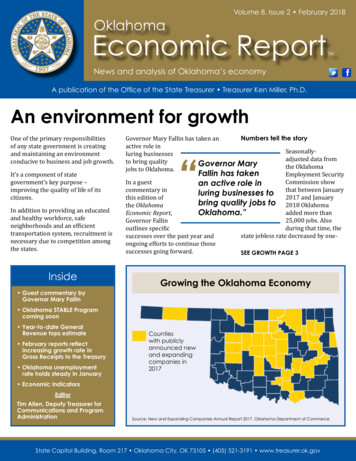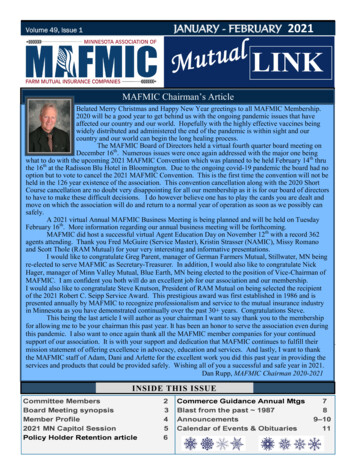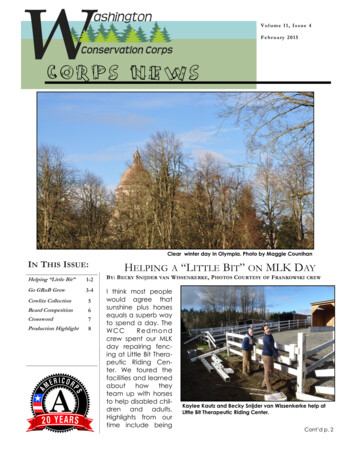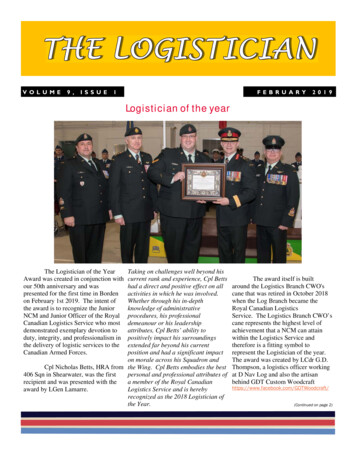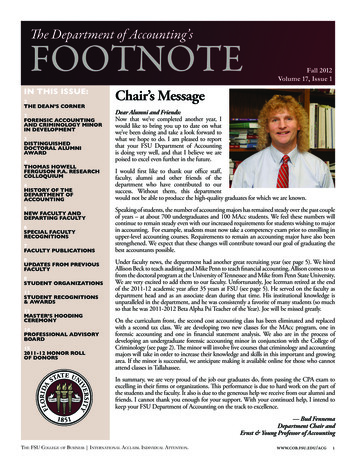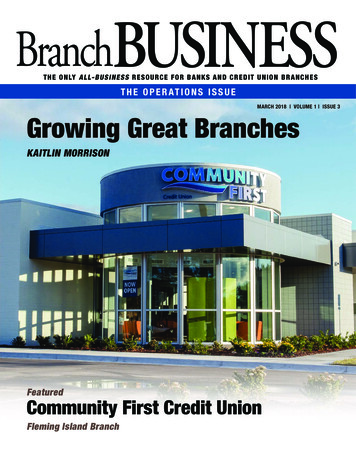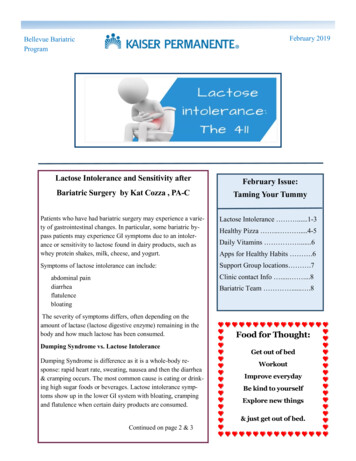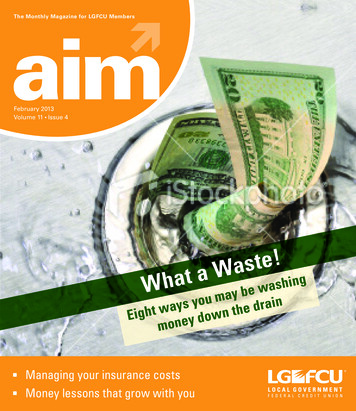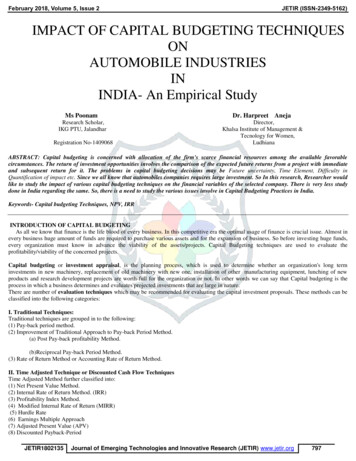
Transcription
February 2018, Volume 5, Issue 2JETIR (ISSN-2349-5162)IMPACT OF CAPITAL BUDGETING TECHNIQUESONAUTOMOBILE INDUSTRIESININDIA- An Empirical StudyMs PoonamDr. Harpreet AnejaResearch Scholar,IKG PTU, JalandharDirector,Khalsa Institute of Management &Tecnology for Women,LudhianaRegistration No-1409068ABSTRACT: Capital budgeting is concerned with allocation of the firm's scarce financial resources among the available favorablecircumstances. The return of investment opportunities involves the comparison of the expected future returns from a project with immediateand subsequent return for it. The problems in capital budgeting decisions may be Future uncertainty, Time Element, Difficulty inQuantification of impact etc. Since we all know that automobiles companies requires large investment. So In this research, Researcher wouldlike to study the impact of various capital budgeting techniques on the financial variables of the selected company. There is very less studydone in India regarding the same. So, there is a need to study the various issues involve in Capital Budgeting Practices in India.Keywords- Capital budgeting Techniques, NPV, IRRINTRODUCTION OF CAPITAL BUDGETINGAs all we know that finance is the life blood of every business. In this competitive era the optimal usage of finance is crucial issue. Almost inevery business huge amount of funds are required to purchase various assets and for the expansion of business. So before investing huge funds,every organization must know in advance the viability of the assets/projects. Capital Budgeting techniques are used to evaluate theprofitability/viability of the concerned projects.Capital budgeting or investment appraisal, is the planning process, which is used to determine whether an organization's long terminvestments in new machinery, replacement of old machinery with new one, installation of other manufacturing equipment, lunching of newproducts and research development projects are worth-full for the organization or not. In other words we can say that Capital budgeting is theprocess in which a business determines and evaluates projected investments that are large in nature.There are number of evaluation techniques which may be recommended for evaluating the capital investment proposals. These methods can beclassified into the following categories:I. Traditional Techniques:Traditional techniques are grouped in to the following:(1) Pay-back period method.(2) Improvement of Traditional Approach to Pay-back Period Method.(a) Post Pay-back profitability Method.(b)Reciprocal Pay-back Period Method.(3) Rate of Return Method or Accounting Rate of Return Method.II. Time Adjusted Technique or Discounted Cash Flow TechniquesTime Adjusted Method further classified into:(1) Net Present Value Method.(2) Internal Rate of Return Method. (IRR)(3) Profitability Index Method.(4) Modified Internal Rate of Return (MIRR)(5) Hurdle Rate(6) Earnings Multiple Approach(7) Adjusted Present Value (APV)(8) Discounted Payback-PeriodJETIR1802135Journal of Emerging Technologies and Innovative Research (JETIR) www.jetir.org797
February 2018, Volume 5, Issue 2JETIR (ISSN-2349-5162)INTRODUCTION OF AUTOMOBILIE COMPANIESThe automotive industry in India is one of the largest in the world with an annual production of 23.37 million vehicles in FY 2015-16,following a growth of 8.68 per cent over the last year. The automobile industry accounts for 7.1 per cent of the country's gross domestic product(GDP). The Two Wheelers segment, with 81 per cent market share, is the leader of the Indian Automobile market, owing to a growing middleclass and a young population. Moreover, the growing interest of companies in exploring the rural markets further aided the growth of the sector.The overall Passenger Vehicle (PV) segment has 13 per cent market share.India is also a prominent auto exporter and has strong export growth expectations for the near future. In FY 2014-15, automobile exports grew by15 per cent over the last year. In addition, several initiatives by the Government of India and the major automobile players in the Indian marketare expected to make India a leader in the Two Wheeler (2W) and Four Wheeler (4W) market in the world by 2020.Role of Automobile Industry in India GDP-Facts India has become one of the international players in the automobile market The four wheelers include passenger cars, multi-utility vehicles, sports utility vehicles, light, medium and heavy commercial vehicles,etc The three wheelers include mopeds, motor-cycles, scooters, and three wheelers India ranks 2nd in the global two-wheeler market India is the 4th biggest commercial vehicle market in the world India ranks 11th in the international passenger car market India ranks 5th pertaining to the number of bus and truck sold in the world It is expected that the Automobile Industry in India would be the 7th largest automobile market within the year industries/automobile)LIST OF 40 COMPAINES UNDER 2627282930313233343536JETIR1802135COMPANY NAMEATUL AUTO LIMITEDASHOK LEYLAND LTDAUDI INDIA PVT LTDBAJAJ AUTO LIMITEDBMWBHARAT BENZ LTD.BAVINA CARSDATSUNDAIMLER AGDECCAN AUTO LIMITEDESCORT LTDEICHER MOTORS LTD.FORCE MOTORS LTDFIAT INDIA AUTOMOBILIESHINDUSTAN MOTORS (HML)HERO MOTOR CORP:HONDA CARS INDIA LTD (HCIL)HYUNDAI MOTOR INDIA LTDINDIA YAMAHA MOTOR PRIVATE LIMITED (IYM)ISUZU MOTORS LTD.INTERNATIONAL CARS AND MOTORS LTD.KOMATSU LTDKAMAZ MOTORS LTDKIA MOTORSKINETIC MOTOR COMPANYMAHINDRA & MAHINDRAMARUTI SUZUKI INDIA LIMITEDMAN TRUCK INDIA PRIVATE LTD.MITSUBISHI MOTORS CORPORATIONMERCEDES-BENZ INDIA PVT LTDNISSAN MOTOR INDIA PVT LTDPIAGGIO & C. SPASKODA AUTO INDIA PVT LTD.SAIC MOTOR CORPORATION LIMITEDSUZUKI MOTORCYCLE INDIA, PRIVATE LIMITED (SMI)SML ISUZU LIMITEDJournal of Emerging Technologies and Innovative Research (JETIR) www.jetir.org798
February 2018, Volume 5, Issue 237383940JETIR (ISSN-2349-5162)TVS MOTOR COMPANYTAFE – TRACTORS AND FARM EQUIPMENT LIMITEDTATA MOTORSTOYOTA MOTORS LTD.REVIEW OF LITERATUREJog and Srivastava (1991) surveyed the large Canadian corporations and provide direct empirical evidence on the capital budgeting process.They found many critical issues viz., cash flow forecasting methods, methods used to estimate the cost of capital and the cost of equity and theuse of capital budgeting techniques risk analysis techniques. He concluded that most of the firms used multiple capital budgeting methods toevaluate capital investments however DCF methods were employed by more than 80% of our respondents to evaluate projects such as foreignoperations and leasing, expansion-new operations and expansion-existing operations.Block Stanley (2000) has surveyed the capital budgeting policies and procedures of 150 multinational companies in light of current financialtheory. He had examined that some of the policies that MNCs used for the capital budgeting decisions are the logical extensions of domesticpractices into the international area, while others appear to be misguided changes to normal capital budgeting procedures. According to his study,there are a number of misapplications such as applying corporate wide weighted average cost of capital to foreign affiliate cash flows rather thanto cash flows actually remitted to the corporations. Also, risk is frequently measured on a local project basis (in a foreign country) rather thanconsidering the multiple effect on the total corporations. Of the 150 survey respondents in this study, 69.7% believe that internationalinvestments increase the risk exposure of the firm and establish policies on that premise. Finally, he has shown that the survey respondents hedgeagainst the uncertainty of the procedures by adding an importance to the weighted average cost of capital as computed by financial analysts giventhe inconsistent procedures that are often utilized in going from domestic to international capital budgeting.Ryan Patricia A and Ryan Glenn P. (2002) had evaluated the capital budgeting decision methods used by the 800 manufacturing companies.According to him, most of the most of the companies preferred NPV as capital budgeting tool, which represents alignment between corporatetheory and practice. Firms with larger capital investment budgets tend to favor NPV and IRR. PBP is used at least half of the time by 73.7% ofthe respondents. Fourth in popularity was the discounted payback model used at least half of the time by 58.9% of the companies. Finally at leasthalf time usage was reported for the three models as follows. PI ranks fifth at 43.9%, followed by ARR at 32.3% and finally, IRR at 24.7%.Gupta Sanjeev, Batra Roopali and Sharma Manisha (2007) had made an attempt to find out which capital budgeting techniques is used bymanufacturing industries in Punjab, and the influence of factors such as size of capital budget, age and nature of the company, and education,gender and experience of the CEO in capital budgeting decisions. They conducted a primary survey of 40 companies in Punjab. Almost one-thirdof the companies had capital budget exceeding Rs. 150million. Majority of the sample companies still use non-discounted cash flow techniqueslike PBP and ARR. Only a few companies use DCF, and among them very less number use NPV technique to evaluate a new project. The mostpreferred discount rate is WACC. The most popular risk incorporating technique is „Shorter PBP. Many companies feel that CEO education andexperience play an important role in selecting the capital budgeting technique. Further, the study did not find any significant relationship betweenthe size of capital budget and capital budgeting methods adopted. Similarly, though at some instances it appears that young companies preferDCF techniques than the older ones, the same is not true in case of NPV method.Klammer, Thomas P. (2008) took a sample of 348 firms in France from the 2001 listing of manufacturing firms that appeared in significantindustry groups and invest at least 1 million of capital expenditures in each of the five years 2001-2006. He concluded that Present valuemethod was most popular among the various manufacturing companies.Pettway (2009) surveyed a random sample of 310 business firms. Questionnaire were sent to companies through mail engaged in retailing,manufacturing transportation, land development, entertainment and public utilities to study the capital budgeting process and the methods usedto adjust for risk. He concluded that firms considered the Internal Rate of Return technique to be the most important technique for decisionmaking. He also conclude that the most of firms enhanced their profitability requirements to adjust for risk and uncertainty in the given projectand determining the future cash flow projections as the most important and most difficult stage of the capital budgeting process.Lawrence G. and Forrester (2010) analyzed the responses of 125 manufacturing firms that reported as having the greatest stock price growthover the 2004-2009 periods. The survey containing questions related to techniques used in capital budgeting process , the division ofresponsibility for capital budgeting decisions, the most important and most various difficulties faced in implementation of capital budgetingtechniques, the cutoff rate and the various methods used to evaluate the risk factor. They reported that the DCF techniques were the most popularmethods for evaluating projects, especially the IRR. However, many firms still used the PBP method as a backup or secondary approach. Themost of the companies that responded to the survey indicated that the Research and Development and Finance Department were responsible forevaluating the capital budgeting projects. They conclude that most of the respondent found difficulty in the project definition and cash flowestimation and they considered these as most critical stage of the capital budgeting process. The most of the firms had a cutoff rate between 11%to 16%, and they most often adjusted for risk by increasing the minimum acceptable rate of return on capital projects.Brighman (2011) conducted the research study of the capital budgeting projects of 15 large manufacturing firms, he found that althoughtechniques that smaller firms prefer PBP method to evaluate the investment proposal but large manufacturing firms most relied on discountedcash flow techniques. Moreover these manufacturing firms assumed some variable constant when discounted cash flow techniques were used.For example, some firms‟ simplifying assumptions include the use of the same economic life and same cash inflows for all projects even thoughthe actual lives and actual cash flows might be different. Further, firms often did not make any adjustment regarding analysis for risk. Thissurvey indicated the result that most of firms preferred discounted techniques.Adeniyi (2012) asserted that in spite of the theoretical limitations of the payback period method, it is the one that is most widely used inpractice. He offered the following reasons for its usage: it is easily understood by all levels of management; it provides an insight on how quicklythe initial can be recouped; most managers see risk as time-related i.e. the longer the period, the greater the chance of failure; where a firm facesliquidity constraints and requires a fast repayment of investments, the pay-back period is more useful; it is appropriate in situations where riskyinvestments are made in uncertain markets that are subject to fast design and product changes or where future cash flows are particularly difficultto predict.JETIR1802135Journal of Emerging Technologies and Innovative Research (JETIR) www.jetir.org799
February 2018, Volume 5, Issue 2JETIR (ISSN-2349-5162)Meigs, et al (2014) a business may benefit from good capital budgeting decisions and suffer from poor ones for many years. Many nonfinancial factors are also considered in making
There are number of evaluation techniques which may be recommended for evaluating the capital investment proposals. These methods can be classified into the following categories: I. Traditional Techniques: Traditional techniques are grouped in to the following: (1) Pay-back period method. (2) Improvement of Traditional Approach to Pay-back Period Method. (a) Post Pay-back profitability Method .
